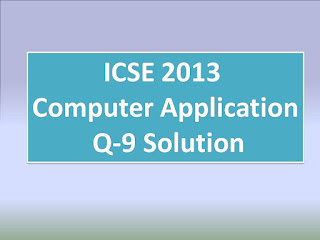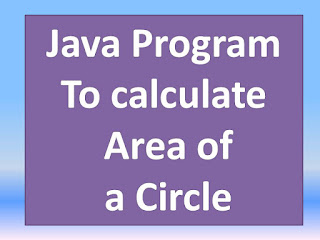(i) To check and
display whether the number input by the user is a composite number or not (A
number is said to be a composite, if it has one or more than one factors
excluding 1 and the number itself).
Example: 4, 6, 8, 9
…
(ii) To find the
smallest digit of an integer that is input:
Sample input: 6524
Sample output:
Smallest digit is 2
ICSE 2013
Solution
import java.io.*;
/**
* class
MenuDriven
*
*/
public class MenuDriven
{
public static void main(String
args[])throws IOException
{
InputStreamReader in=new
InputStreamReader(System.in);
BufferedReader br = new
BufferedReader(in);
int n, count, ch, small,
a, i;
// For menu
// For menu
System.out.println("Enter 1 for Composite number");
System.out.println("Enter 2 for Smallest digit search");
System.out.print("Enter your choice :");
ch=Integer.parseInt(br.readLine()); // enter menu option
switch(ch)
{
case 1: // for checking composite number
count=0;
System.out.print("Enter a number :");
n=
Integer.parseInt(br.readLine());
for(i=2;
i<=n/2; i++)
{
if(n % i == 0)
count++;
}
if(count>0)
System.out.println("Entered number is Composite number");
else
System.out.println("Entered number is Composite number");
break;
case 2: // for checking smallest digit from a number
System.out.print("Enter a number :");
n=
Integer.parseInt(br.readLine());
small=99;
while(n!=0)
{
a = n % 10;
if(a <
small)
{
small = a;
}
n = n / 10;
}
System.out.println("Smallest
number is " + small);
break;
default:
System.out.println("Wrong choice");
}
}
}
Output:
Enter 1 for Composite number
Enter 2 for Smallest digit search
Enter your choice :1
Enter a number :27
Entered number is Composite number
Enter 1 for Composite number
Enter 2 for Smallest digit search
Enter your choice :2
Enter a number :78653
Smallest number is 3




